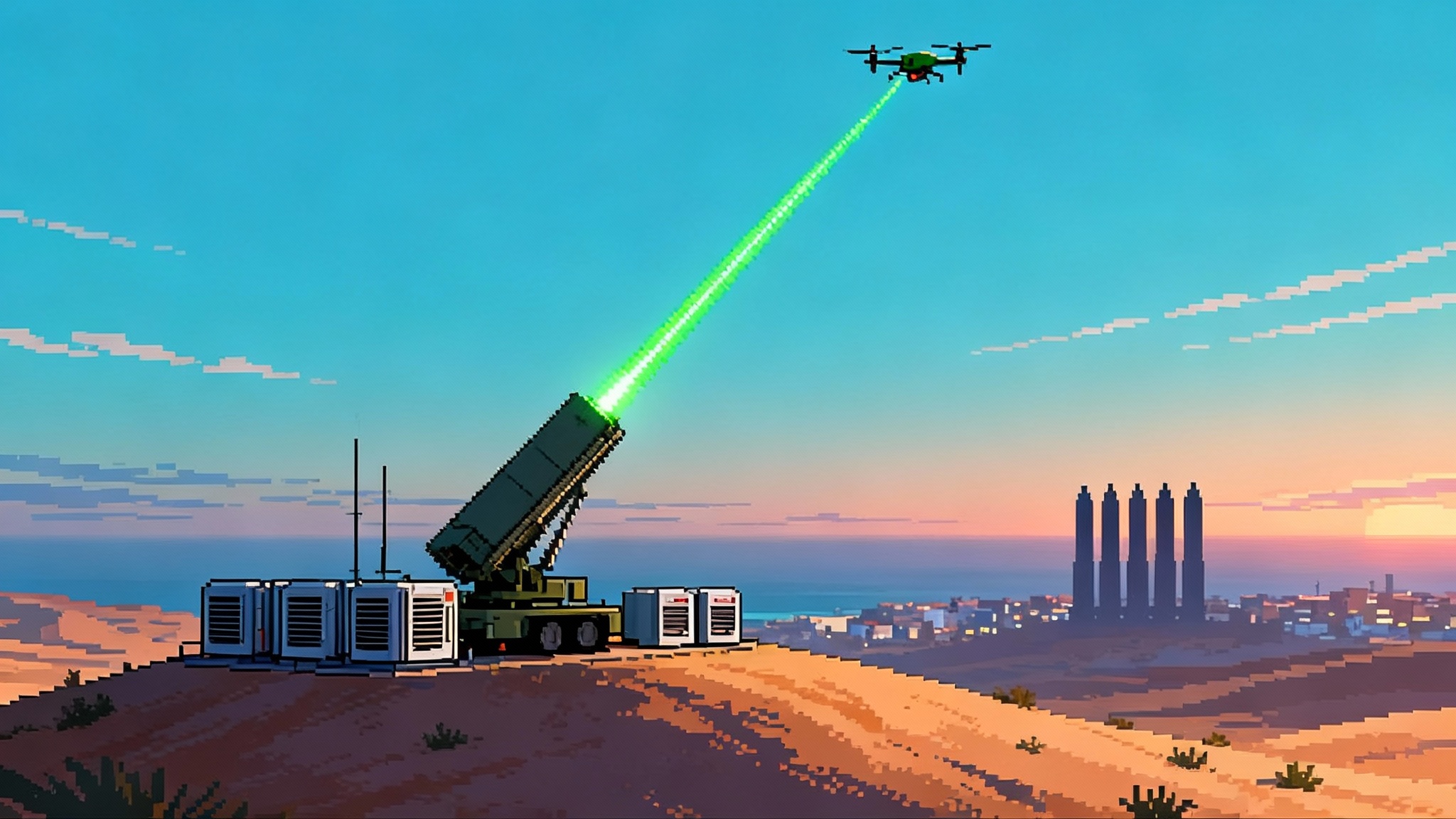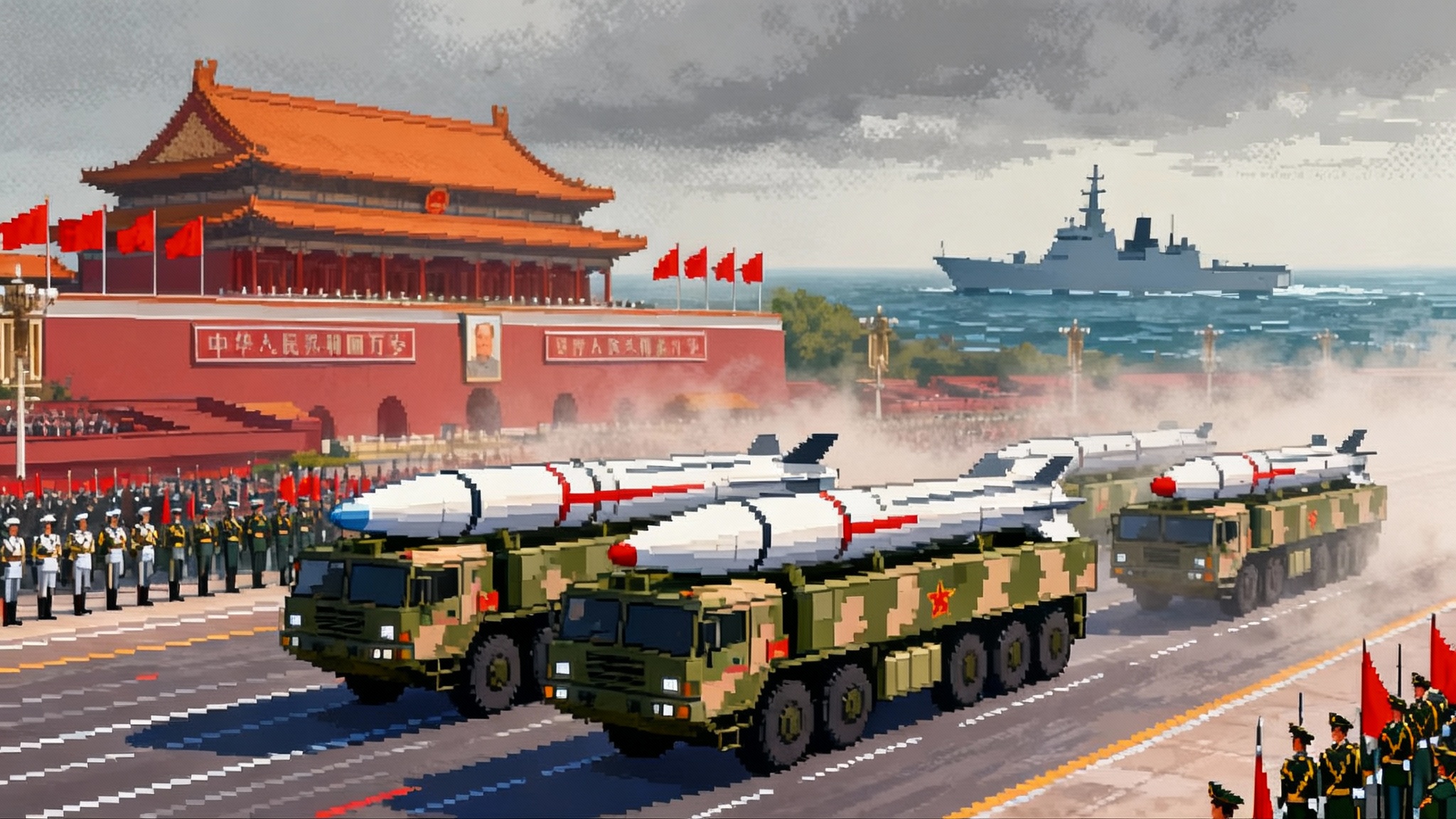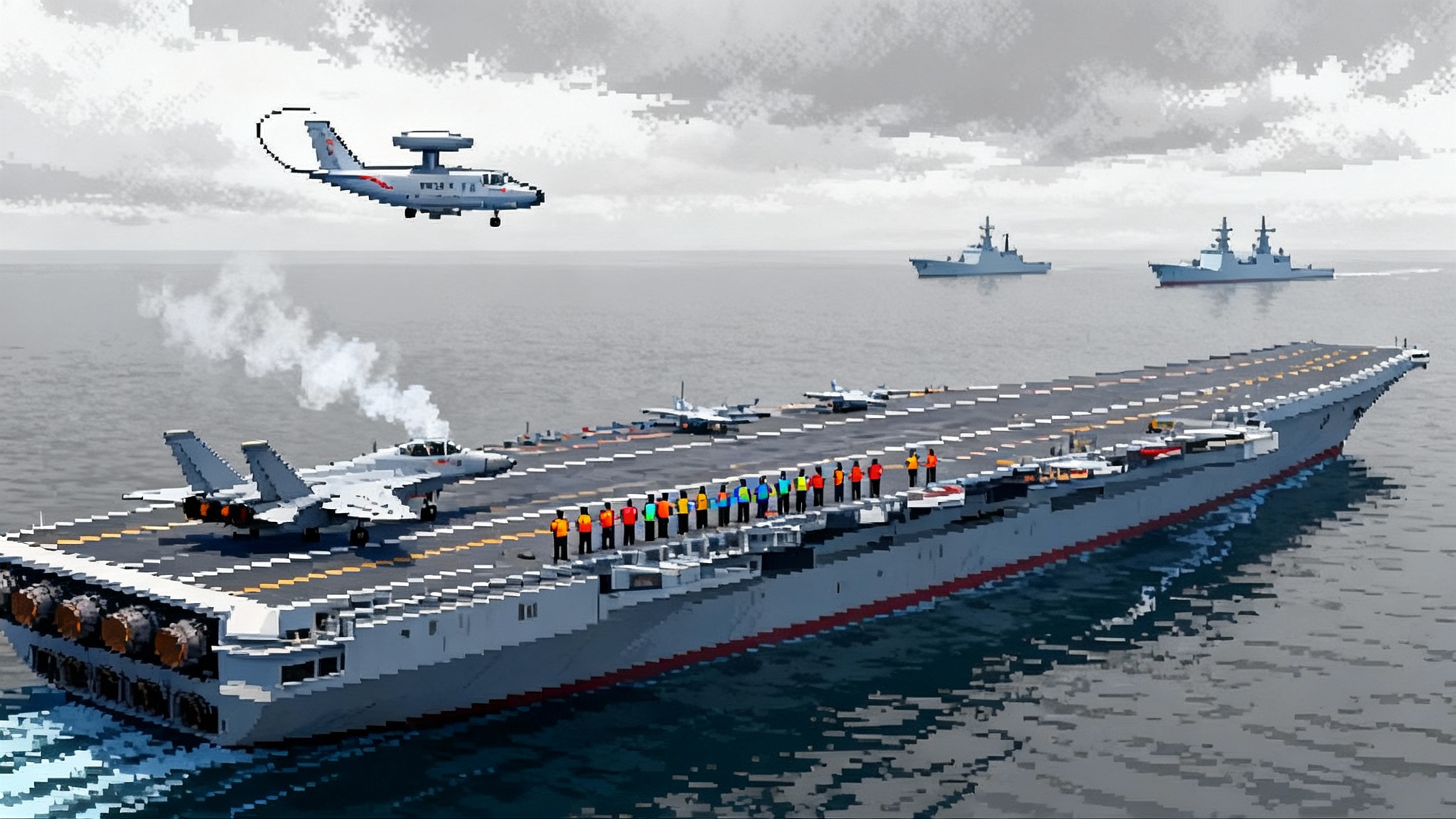Tranche 1 hits orbit: SDA’s LEO mesh rewrites kill chains
On September 10, 2025, SpaceX’s Falcon 9 launched 21 SDA Tranche 1 Transport Layer satellites from Vandenberg. With roughly monthly launches planned, a 150 plus satellite LEO mesh with optical crosslinks and Link 16 is set to accelerate missile warning, targeting, and joint fires.

The moment that changes the tempo
At 7:12 a.m. local time on September 10, 2025, a Falcon 9 rose through the coastal cloud deck at Vandenberg and put 21 Transport Layer satellites into low Earth orbit. The payload belongs to the Space Development Agency and marks the first operational slice of Tranche 1, the Proliferated Warfighter Space Architecture moving from concept to cadence. A Space Systems Command announcement set the tone for what comes next, with an approximate pace of one launch per month for the next nine months as the constellation fills out.
This first mission put the York Space Systems satellites into an insertion orbit for checkout and orbit raising toward roughly 1,000 kilometers. It also activated the ground side that will fight the network, including Space Operations Centers at Grand Forks Air Force Base in North Dakota and at Redstone Arsenal in Alabama. The real headline is not a single launch. It is the start of a sustained build that aims to deliver a 150 plus satellite mesh in Tranche 1 alone, with additional tracking spacecraft joining the transport nodes over the campaign.
What a proliferated LEO mesh actually does
Proliferation is a design choice. Instead of a small number of exquisite satellites, SDA fields many smaller spacecraft in multiple orbital planes and connects them with optical crosslinks. That mesh does three things at once:
- It compresses the distance data must travel, which lowers latency for time sensitive targeting.
- It creates multiple independent paths for traffic, which raises resilience when any given link or node is denied or degraded.
- It pushes military waveforms like Link 16 closer to the tactical edge, which expands beyond line of sight connectivity for aircraft, ships, ground units, and missile defenses.
Each Transport Layer satellite in Tranche 1 carries four optical terminals for laser links and radio payloads that speak both Ka band and Link 16. As described in SDA’s SDA on-orbit overview, optical links deliver high bandwidth and are difficult to jam, while Link 16 and Ka band payloads let the network talk in the languages the joint force already uses.
The result is a constantly reconfigurable fabric. Data hops satellite to satellite by laser until it is near the intended theater, then drops to a shooter or a sensor via tactical radio. Because the network is in low Earth orbit, the round trip is faster than routing everything through higher altitude relays and terrestrial backbones. That speed creates options in the minutes that matter when a missile launches or a fleeting target appears.
From warning to weapons: how kill webs get shorter
The legacy mental model was a line: sensor to operations center to shooter. The mesh flips that model into a web. A sensor can publish a track directly into the transport layer, which moves it laterally across the theater to multiple decision makers and multiple shooters at the same time. Battle management can happen at several points in that web, and the first available shooter with a valid engagement window can act.
For missile warning and tracking, this matters in two ways:
- It shortens the detection to firing sequence because the network does not need to haul data back to a single fixed ground node and then retransmit to the field.
- It increases parallelism because many shooters can receive the same time coherent picture nearly simultaneously.
Consider a sea skimming cruise missile threat. A forward airborne sensor tips a track. The Transport Layer routes that track directly to an Aegis ship, a ground based battery, and nearby fighter aircraft. Each receives the same data at nearly the same time, and each can query for updates through the same mesh. The kill web does not depend on any single gateway staying healthy, and the network can side step a jammed region by routing around it through optical links.
For ballistic and hypersonic threats, the benefit is similar. Tracks from space based sensors enter the mesh and reach both command centers and tactical interceptors with less delay. Cueing and fire control quality updates move in a continuous loop. The transport layer is not a sensor itself, but by moving track data faster, more securely, and more resiliently, it improves the entire end to end chain from first detection to intercept or strike.
Why the Link 16 and Ka band combination matters
The joint force already relies on Link 16 for air to air, air to surface, and surface to air coordination. Grounding the first operational Transport Layer in Link 16 is a deliberate choice. It lets legacy and modern platforms join the space backbone without waiting for new radios across the fleet. Ka band brings higher throughput and additional options for terminals that need more bandwidth for maps, video, or large data products. Together, they let the mesh serve both small tactical messages and heavier data flows.
There is another reason to care. Link 16 from LEO provides beyond line of sight for platforms that were historically limited by terrain and the horizon. An aircraft at low altitude, a ship beyond the radar horizon, or a ground unit in complex terrain can still receive time critical information without relying on vulnerable single point terrestrial relays. The mesh turns LEO into a radio tower that follows the force as it maneuvers.
Optical crosslinks are the backbone
Laser crosslinks between satellites do the heavy lifting. They connect each node to several neighbors at once, which creates redundant paths. They also carry high bandwidth in narrow beams, which makes interception or disruption more difficult. In Tranche 1, each satellite includes four optical terminals, which allows multiple simultaneous connections. When a node fails or a link degrades, the network can re route in a fraction of a second.
The shift from RF crosslinks to optical is not just an engineering upgrade. It changes what is practical. With optical links, the Transport Layer can move targeting grade data from one side of a theater to the other in time to matter. It can also synchronize multiple shooters to the same engagement timeline, rather than serializing actions through a central node. That is what rewrites kill chains into kill webs.
What changes for joint fires
- Dynamic targeting speeds up. With low latency delivery to the edge, a sensor find can trigger a coordinated strike package before a mobile emitter shuts down or a convoy disappears into cover.
- Deconfliction gets easier. When every participant sees the same track within seconds, airspace control and weaponeering decisions converge faster.
- Distributed fires become standard. Army, Navy, Air Force, and Marine units can hold targets at risk from multiple domains, confident that the targeting picture they share is aligned in time and space.
The Transport Layer also helps close the loop after a strike. Battle damage indications and assessments can ride the same mesh back to decision makers, allowing rapid re attack or re tasking without waiting for a traditional roll up.
Implications for air and missile defense
Air and missile defenders live on minutes and seconds. The mesh can deliver earlier and richer cueing to Patriot, Aegis, NASAMS, and future systems, even when terrestrial networks are degraded. It can also carry track quality updates that refine firing solutions while interceptors are in flight. For cruise missile defense of the homeland and for theater missile defense, that combination increases defended area and engagement confidence. For how directed energy is changing this mission set, see how lasers rewrite air defense math.
Because Tranche 1 is proliferated across planes and orbits, it is harder for an adversary to blind the network at scale. A localized jam or the loss of a single node does not collapse the picture. The optical backbone reduces reliance on RF relay in space, which in turn reduces susceptibility to wide area jamming in the space segment. For a related look at contested PNT, explore how GPS jamming reshapes NATO PNT.
Allied integration, finally at scale
Allies operate on Link 16, share Ka band infrastructure, and contribute sensors and shooters in every theater. The Transport Layer offers a path to move beyond patchwork gateway solutions. With proper policy and crypto, allied aircraft and ships can receive the same time critical tracks at the same time as U.S. units. That matters in the North Atlantic, the Indo Pacific, and the Middle East, where coalition operations are the norm. Recent regional upgrades such as Japan’s SPY-7 air defense upgrades highlight how quickly partners can integrate when standards align.
For allies that buy into compatible terminals, the payoff is immediate. They do not need to field a bespoke satellite fleet. They need to connect to a common backbone and agree on the rules. Tranche 1 is the start of that conversation at operational scale.
Risks and friction points to watch
- Counterspace threats. Proliferation raises the bar for kinetic kill and directed energy attacks, but it does not remove the threat. Adversaries will probe for systemic weak points, including ground stations and inter plane dependencies.
- Ground segment complexity. Many satellites and many entry points mean more software, more keys, more updates, and more failover logic. Operating the mesh at scale is an engineering and human challenge.
- Spectrum management. Link 16 and Ka band are crowded neighborhoods. The network must avoid fratricide with friendly emitters and manage coexistence in congested theaters.
- Supply chain and integration. Optical terminals, crypto, and propulsion components must arrive on time, integrate cleanly, and survive launch. Tranche 1’s long rollout is a systems integration marathon.
- Cyber and data assurance. A faster network is only an advantage if the data is trusted. Authentication, encryption, and tamper detection need constant attention.
None of these are showstoppers. They are the realities of fielding a military grade internet in space while adversaries are watching.
What the next nine months could unlock
The launch on September 10 populated the first orbital plane. Each subsequent launch adds another plane, more coverage, and more paths in the mesh. Early launches focus on Transport Layer nodes with additional vendors joining, followed by Tracking Layer spacecraft that bring the missile warning and tracking picture directly into the same fabric. As planes fill, users in more regions will see the network begin to feel continuous rather than episodic.
Expect early operational use to start at the edges. Units will leverage the mesh for backhaul of targeting data from aircraft and ships already equipped with compatible terminals. Air defenders will use the low latency transport to move cueing data between sensors and shooters during exercises, then carry those tactics into real operations. As more planes arrive, the network will shift from augmentation to dependency. Commanders will plan around it.
How to measure success
- Time to first tactical effect. How quickly do units report that the mesh shortened their engagement timelines in real sorties or exercises.
- Resilience under pressure. During jamming events or cyber exercises, does the picture stay coherent and does traffic re route without manual intervention.
- Allied participation. How many partners connect and use the network for live operations, and how many contribute data back into the fabric.
- Integration with command and control. Do existing tools in air operations centers and maritime operations centers ingest and exploit transport layer data without kludges.
- Cadence discipline. Do launches maintain the planned tempo, and does each plane integrate into operations on schedule after on orbit checkout.
Dollars and design choices
SDA has pushed hard on cost through fixed price, competitive awards, and the decision to adopt commercial production methods where possible. Public statements have placed the average cost per Tranche 1 Transport Layer space vehicle around $14 million, a figure that only makes sense in a proliferated design where the value comes from the network, not any single node. The point is not to make satellites disposable. It is to make the cost of resilience and coverage match the scale of the mission.
Bottom line
The September 10 launch was not just another rocket ride. It was the first operational step in building an always on LEO backbone for the joint force. With optical crosslinks in space and Link 16 and Ka band at the edge, the Transport Layer is designed to move targeting and warning data at the speed modern fights demand. As additional planes lift in the coming months, the mesh will spread, the kill webs will tighten, and the balance of time in the opening minutes of a crisis will tilt toward the side that gets there first with the right data.
If Tranche 1 maintains its launch tempo, proves resilience under real world stress, and brings allies into the loop at scale, it will not just remake missile warning and targeting. It will change how the joint force thinks about command and control, because the network in space will start to feel as inevitable and as invisible as the internet on the ground. That is the quiet revolution now climbing into orbit, one plane at a time.








